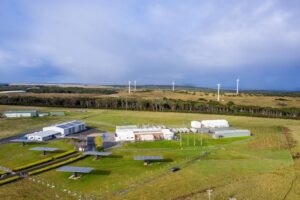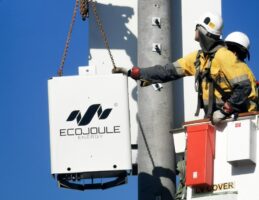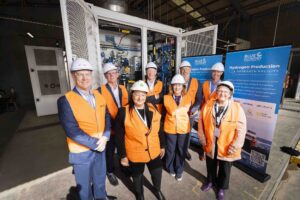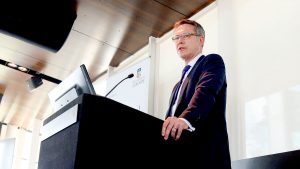Japan is reportedly eyeing offshore wind as the country’s energy of the future and has set a target to install as much as 45GW of offshore wind capacity by 2040, with an interim target of 10GW by 2030.
Various reports quoting a Japanese Ministry of Economy, Trade and Industry (METI) statement (but which does not appear on the Ministry websites) claim that Japan has set itself a target of quadrupling its offshore wind capacity in an effort to meet its 2050 net-zero emissions target.
Japan joined an increasing list of countries committed to securing net-zero emissions by the middle of the century – a commitment Australia stubbornly refuses to adopt, even as its closest trading partners make the leap. In addition to Japan, South Korea set a net-zero target in late-October, and region’s largest economy, China, set itself a target to reach climate neutrality before 2060 in late-September.
Japan’s power sector has been in constant flux since the Fukushima Daiichi nuclear disaster of 2011, which led to a wholesale reversal on the popularity of nuclear energy and resulted in all the country’s nuclear reactors shutting down, and at least 21 reactors were announced to be decommissioning.
Earlier this year, analysts at energy consultancy Wood Mackenzie predicted that Japan would invest over $US100 billion ($A139 billion) in solar and wind power over the next decade, taking the country beyond its renewable energy target of 24% to a share of 27% by 2030.
Add to that initial steps to develop a Japanese offshore wind industry, when in early 2019 Danish power company Ørsted and Tokyo Electric Power Company Holdings, better known as TEPCO, announced a Memorandum of Understanding to explore the possibility of jointly developing offshore wind projects in Japan and around the world.
It is little surprise, then – especially given Japan’s geographical position – that Japan’s Ministry of Economy, Trade and Industry announced this week that it would dramatically scale up the country’s offshore wind industry and begin weaning itself off its reliance on coal-fired power generation.
If Japan is able to follow through on these ambitious plans, it would solidify itself as a global offshore wind industry leader and position itself as a regional expert.
Japan’s Government is now reportedly targeting an interim of 10GW of offshore wind capacity by 2030 and between 35GW and 45GW by 2040.
As of the end of 2019, Japan had only 65.6MW of offshore wind, including five floating offshore wind turbines totalling 19MW. However, according to the Global Wind Energy Council (GWEC), “the full scale of Japan’s offshore wind potential has yet to be unlocked due to regulatory and industrial bottlenecks”.
In early 2020, the GWEC and the Japan Wind Power Association (JWPA) announced that they had formed a joint Japan Offshore Wind Task Force in an effort tot drive offshore wind growth in Japan.
“2020 will be a turning point for offshore wind in Japan as new regulations come into place that will open new doors for this nascent market,” said Jin Kato, President at JWPA, speaking in February.
“Considering the high population density and limited land availability of the country, it simply makes sense to take advantage of the power potential of offshore wind on Japan’s 29,751 km coastline to drive the country’s energy transition.
“Developing this industry will be an important boost to Japan’s economy, it is estimated that by 2030 offshore wind could create direct investments of ¥5-6 trillion, generate 80,000-90,000 new jobs and reduce Japan’s carbon emissions by 71 million tons. It is therefore the ideal moment to form the Japan Offshore Wind Task Force and accelerate the momentum that has been developing for the industry over the past few years.”
Japan’s Government plans to be involved from the planning stages of projects in an effort to facilitate the growth of the offshore wind sector. A demonstration project is expected to be underway next year.









